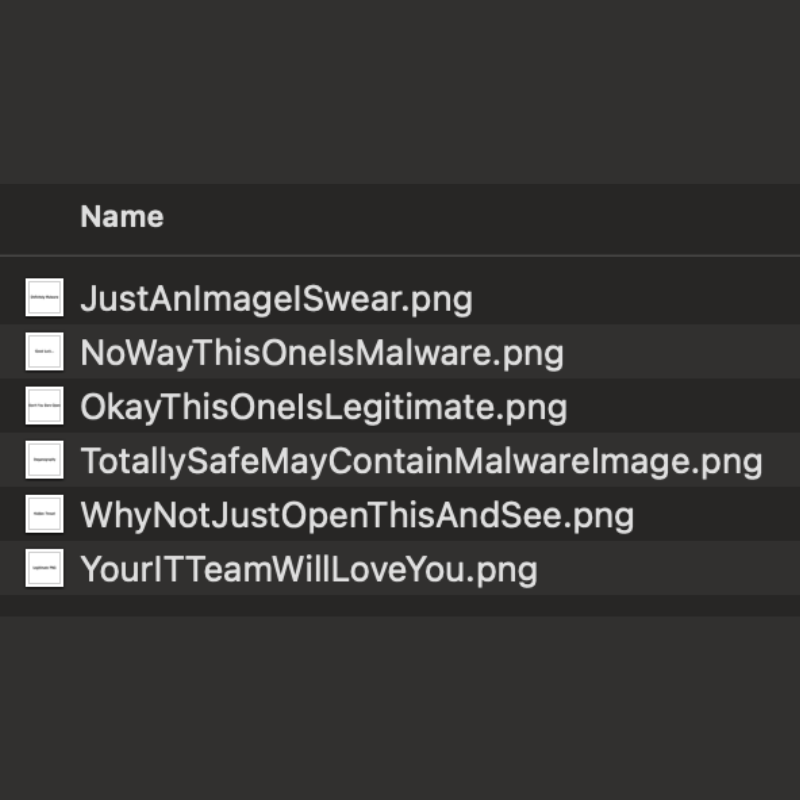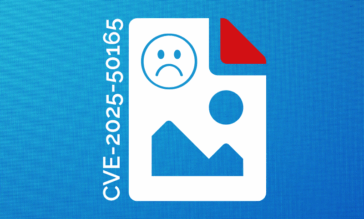Invisible Threats: The Rise of AI-Powered Steganography Attacks

Cybercriminals constantly evolve tactics, using stealth and ingenuity to bypass even the most advanced defenses.
Steganography has had a long history of being used to hide malicious code within seemingly harmless image files, some of which we’ve detailed in a number of blogs, such as: How Hackers Hide Malware With Image Steganography, an Example of Image Steganography, and how its greatest adversary continues to be Content Disarm and Reconstruction (CDR).
At first glance, the files hackers use appear to be ordinary images, the kind you’d find attached to an email or hosted on a public platform. But beneath the surface lies a payload of harmful code designed to infiltrate and compromise unsuspecting systems. In the era of artificial intelligence (AI), steganography is seeing an alarming resurgence.
Understanding Steganography: Malware Hidden in Images
As if hidden payloads in files were not concerning enough, recent research has uncovered a sophisticated cyberattack leveraging steganography.
Taking this malware threat a step further, cybercriminals are now using AI to refine their methods, embedding malicious payloads with greater precision and creating image files that are nearly indistinguishable from legitimate ones. This combination of AI-driven techniques and steganography allows malware to bypass traditional detection systems that often overlook non-executable files, making these attacks more evasive and dangerous than ever.
How Steganography Works with AI
The sophistication of steganography-based malware lies in its seamless ability to infiltrate systems under the guise of harmless images, with AI playing a crucial role in elevating these attacks. Here’s how attackers leverage this stealthy tactic step by step:
The Initial Entry
It all begins with a carefully crafted phishing email disguised as a number of legitimate files, such as an invoice, a purchase order, or an internal company correspondence. These emails are designed to lure unsuspecting recipients into opening malicious attachments. AI is frequently used to make these messages more believable and enticing to users, making them hard to distinguish from real emails.
Once opened, these emails exploit known vulnerabilities, such as CVE-2017-11882, and the attackers create a foothold in the target system. The initial breach sets the stage for a more covert operation, evading detection by traditional defenses.
Image as a Payload
After exploiting the vulnerability, the malicious script initiates the download of an image file hosted on a public platform like archive.org. On the surface, this file appears to be an innocuous image. However, hidden within the file is Base64-encoded malicious code, invisible to the naked eye. This encoded payload is extracted and decoded into a fully functional executable file, ready to launch its attack.
Payload Deployment
Once the executable is activated, the final stage of the attack begins. Malware such as VIP Keylogger or 0bj3ctivity Stealer is deployed, enabling attackers to exfiltrate sensitive data or gain unauthorized access to critical systems. AI can further optimize these tools, allowing them to adapt in real time, evade detection, and operate covertly within the victim’s environment.
The layered nature of this attack, combined with AI precision, makes it exceptionally dangerous. By hiding malicious code within an image file and leveraging advanced tactics, attackers can bypass traditional detection methods and gain unrestricted access to sensitive information.
Why It’s Dangerous
The danger of steganography-based malware attacks lies in their ability to exploit trust and bypass traditional defenses. For instance, when was the last time you opened an image file sent to you by what you assumed was a trusted source? Probably more often than you thought. Many businesses rely on the ability to send and receive digital photos in order to process returns, find products, and enable customer support tickets.
By embedding malicious code within seemingly harmless image files, attackers evade detection from antivirus solutions and other scanning technologies that typically overlook non-executable files. This stealthy approach allows the threat to slip past the frontline of defense without raising alarms. And as we know, a day zero threat is a day too late.
What makes this method even more insidious is its subtlety. The reliance on innocuous image files means that users, and even security teams, are unlikely to suspect malicious intent. A typical employee receiving an invoice or a promotional image attached to an email might not think twice about opening it. Meanwhile, the embedded payload silently executes, laying the groundwork for data theft, unauthorized access, or deeper infiltration.
The impact of such attacks can be devastating. Whether sensitive customer data is exfiltrated, financial losses are suffered from compromised systems, or reputational harm is caused by a publicized breach, the consequences ripple through organizations with lasting effects. It’s why many data security tools harp on the importance of Recovery Time Objectives (RTO) and Recovery Point Objectives (RPO) — they expect to clean up after an intrusion, not stop it from happening in the first place. The combination of stealth, precision, and widespread impact underscores why steganography-based malware attacks represent a significant and evolving threat.
Proactive Malware Neutralization
Proactive data security is the cornerstone of protecting against advanced threats like steganography, and advanced CDR technology continues to lead the charge in neutralizing risks before they have a chance to take root. By sanitizing files at the point of entry, CDR ensures that no hidden threat can infiltrate your systems, no matter how cleverly disguised. This includes deconstructing even non-executable files, like images, which have become a favored vessel for attackers leveraging steganography-based malware.
The power of CDR lies in its approach. Every incoming file is treated as a potential threat, adhering to a zero-trust model. Instead of relying on detection (such as AV alone), which can fail when facing novel or zero-day exploits, CDR dismantles the file, removes any embedded malicious elements, and reconstructs it into a safe, functional version. This proactive process ensures that scripts, encoded payloads, and other hidden dangers are neutralized without compromising usability or disrupting workflows.
A Step-by-Step Guide to CDR Versus Image-Based Attacks
- The CDR process begins with deconstruction.
When an image file is processed, CDR dissects its metadata and content, thoroughly analyzing it and breaking it down into its core components. The first assumption would be that it is looking for threats, but instead, it is identifying known safe elements. The potential threats fall out in the process by rebuilding only from the items that are certain to be safe.
- CDR technology rebuilds the file into a clean, safe version.
Depending on the level of CDR you’re deploying (spoiler: Level 1 is a glorified PDF, Level 2 is a PDF with a few functions that can still contain malware, and Level 3 is what keeps businesses safe AND productive by enabling macros), whether it’s an image for marketing materials or a design file shared with a client, the user experiences no disruption while remaining protected.
- The final act of CDR is to prevent payload execution.
By neutralizing malicious scripts or encoded data embedded within image files, CDR ensures that malware never reaches the stage where it can cause harm. The reconstructed file is free of concealed dangers, providing users with peace of mind and uninterrupted workflows. Working swiftly in the background, end-users and IT alike should see no difference in typical workflows while reducing the amount of alarm bells.
Benefits of Votiro CDR for Organizations
Organizations today face an ever-evolving threat landscape where advanced, stealthy attacks increasingly exploit the limitations of traditional defenses. Again, as AI finds its footing amidst a wide audience, there’s no telling how far a hacker can bury their code within images. Votiro’s CDR technology offers a proactive solution that addresses current vulnerabilities and prepares organizations for tomorrow’s threats.
One of the standout benefits of Votiro’s advanced CDR is its seamless integration into existing workflows. As an open-API, Votiro works tirelessly behind the scenes to sanitize and reconstruct files being downloaded from the web, opened via email, transferred and stored in data lakes (and the list goes on) while users experience no disruption. Files retain their original functionality and format, ensuring employees can continue tasks without interruptions or added complexity.
For IT and SOCs, by neutralizing zero-day threats and ransomware that threatens to expose sensitive data, there’s a significant reduction in false positives, alerts, and the ability to focus on real threats that don’t require a costly and confusing RTO or RPO plan in order to mitigate.
As attack methods evolve, so must the defenses protecting organizational data and systems. Votiro’s zero-trust approach and ability to sanitize even the most sophisticated steganographic payloads ensures that organizations are equipped to face today’s threats and tomorrow’s emerging challenges. By adopting proactive measures like CDR, businesses can stay ahead of cybercriminals and maintain a resilient security posture.
Get Defense Against Hidden Threats and Privacy Risks
Don’t leave your organization vulnerable to hacking techniques as old as steganography—schedule a demo today to see how Votiro can secure your workflows without disrupting productivity. And we don’t stop there.
As a Zero Trust Data Detection and Response platform, our CDR is complemented by Active Data Masking to ensure that even if bad actors get hold of confidential documents or sensitive data such as PII, PCI, and PHI, that key information has been obfuscated and deemed worthless for third-party plans.
Enjoy a free 30-day trial to see the kind of peace of mind Votiro DDR can bring to your organization.
News you can use
Stay up-to-date on the latest industry news and get all the insights you need to navigate the cybersecurity world like a pro. It's as easy as using that form to the right. No catch. Just click, fill, subscribe, and sit back as the information comes to you.
Sign-up Here!
Subscribe to our newsletter for real-time insights about the cybersecurity industry.



